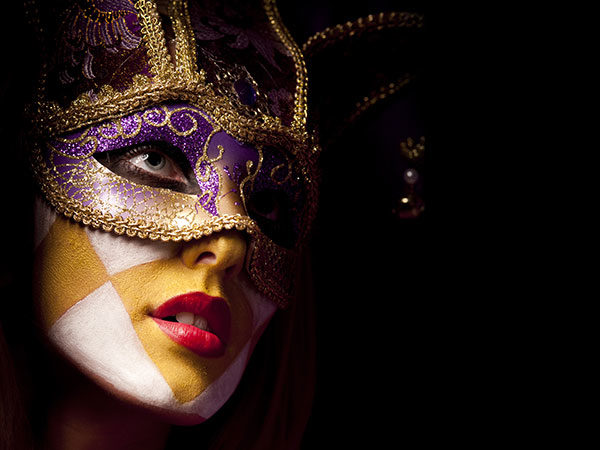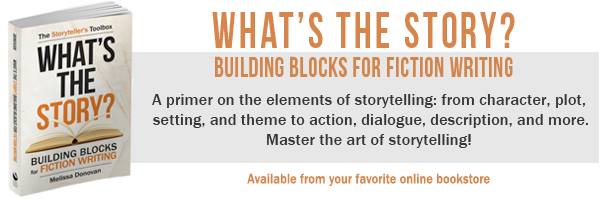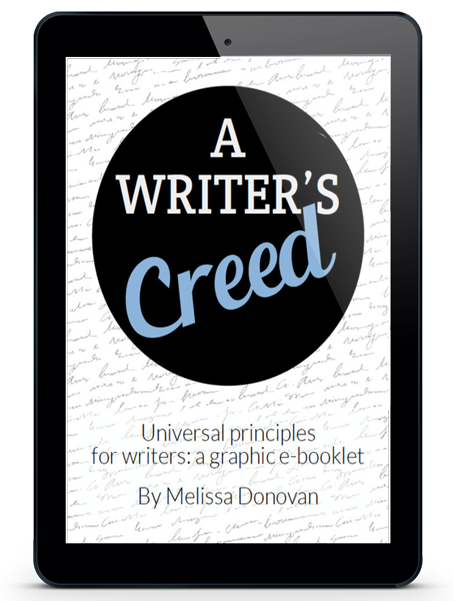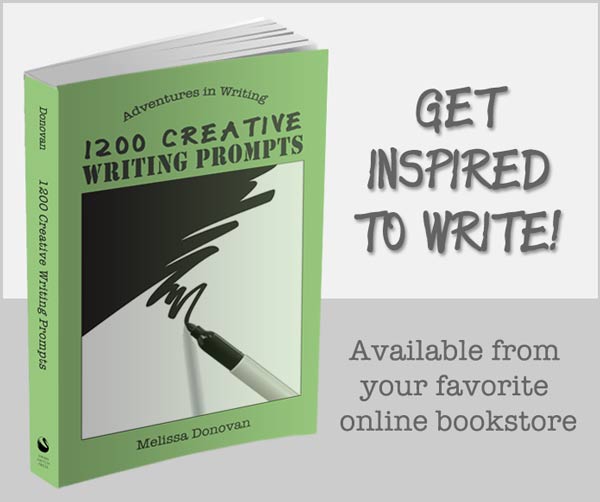Creating a realistic character is one of the most difficult challenges in writing a piece of fiction. We’ve all read stories in which the characters were dull or hollow; they come across like clones of the same characters we’ve met in dozens of stories before.
Readers want characters who are as unique and complex as real people.
Are we, as writers, obligated to deliver such characters?
Not necessarily. Plenty of stories are plot-driven or centered around theme rather than character. But the stories that resonate most feature vivid, dynamic characters. Readers and writers often sing the praises of character-driven fiction. So the single best way to intrigue readers is to give them characters they can’t forget.
Character Writing Ideas
You can spend hours, days, weeks, or months developing character ideas. Whether you launch into your story with little knowledge of your characters or create full sketches and backstories for each one before you begin drafting the narrative, there are plenty of tricks and techniques you can use to inspire characters and breathe life into them.
- Use real people as models for your characters. Think of all the people you know intimately, people you love as well as people you despise. Take their strongest and most interesting traits and qualities and give them to your characters.
- Need a face for your character? You can use people you know for this too, but you can also use celebrities and other public figures. Some writers find that putting a face to a character brings out a more robust personality. Try it!
- A baby-name dictionary is a great starting place for names, and names can help you generate ideas for your character sketches. Think about how names influence our perceptions of people, and sketch a character that fits their name.
- Start with a predicament. Then create characters who have the skills to get out of that predicament. Thieves, for example, can pick locks, so if your characters need to get something out of a locked room or building, one of your characters may have some experience in burgling.
- Live out your dreams. When you were a kid, did you want to be a rock star or an astronaut? Well, now you can live vicariously through your characters!
- Turn to fiction. Books, movies, and TV shows are packed with incredible characters that audiences have already fallen for. Don’t try to copy these characters, but by all means, use them for inspiration. Ask yourself what made your favorite characters so compelling.
- We all have quirks, so it makes sense for characters to have quirks too. Freckles, bitten fingernails, a limp, or a lisp are all ways you can set one character apart from the others.
- Family and friends make us who we are. Draft sketches for your characters’ family and friends (even if they’re not going to appear in the story) and you may learn a thing or two about your character.
- Have some style! From a modern urban princess to a bum on the street, every person has his or her own style. Your characters should too! What do they wear? How does she make up her face? Does he wear cologne?
- Most people have interests, hobbies, and passions. Even if your character’s personal interests aren’t tied directly to the plot, they could enrich it, and they’ll certainly make your character more believable.
- I’ve always found mannerisms and gestures fascinating. You often see the same mannerisms mirrored throughout a family or group of friends. In fiction, give each character their own unique gestures; biting the bottom lip, scratching one’s forehead, and tapping one’s toe on the floor are all good options.
- Have you ever noticed that everyone you know has their own special way of talking? We each have a unique voice based on how we string words together, expressions we frequently use, and our intonation. You can make a character more realistic by simply giving the character a unique voice through dialogue.
- Some of the best characters are extreme or over the top. Think of Luke Skywalker, Robin Hood, and Indiana Jones. These characters have strong personalities and are deeply driven by higher values and personal desires. Think about how your characters’ philosophies and goals shape their personalities.
- Not all characters are human! Stories can be enriched with pets; they may not be necessary to the plot, but they can add to the emotional value of a story.
- Do you write science fiction or fantasy? Forget non-human pets. Try creating characters who are not of this earth: androids, aliens, and mythological or fantastical creatures.
- When you’re fresh out of good character writing ideas, try taking your characters out of the story altogether. Write a scene from a character’s backstory or draft a monologue in your character’s voice.
- Spend some down time with your characters. What do they do when they’re not struggling with conflict or saving the world? Where do your characters eat? How do they organize their closets? What do they listen to while working out? Sometimes taking a peek at your characters’ most mundane moments will give you insight to who they are.
- Balancing traits among a group of characters means that each character brings something different to the table. Harry Potter was a hero, but where would he have been without Hermione’s smarts and Ron’s loyalty? Distribute different strengths and weaknesses among your characters, especially if you’re writing an ensemble piece.
- The literary canon is full of ancient and archetypal characters. From the herald and the hero to the trickster and the villain, myths, legends, and fairy tales can inspire and inform your characters. Put a new twist on these old favorites by forming (rather than copying) your characters from these proven standards from storytelling.
- What about you? It’s the oldest trick in the book: base a character on yourself.
What are some of your favorite character writing ideas and activities? How do you come up with new characters or make your characters realistic? Share your thoughts by leaving a comment.






I usually style my characters after my dream images of people I have seen in life as interesting, or as heroic. Their actions and quirks, I have noticed, can usually be attributed to friends, family, or just people I’ve met and known somewhere in my lifetime. Our thoughts and perceptions of people, can carry us into whole new worlds when discovering and developing characters for our writings.
Great post !
Oh wow you reminded me of something I left out in my post below. Charicatures of real life people is also the best way. Just embellish their flaws and qualities or even mix two people into one character and see how it plays out.
Absolutely!
Thanks, Michael. I know what you mean. I tend to mix traits from public figures, people I know personally, and people I’ve dreamed up. It’s a lot of fun!
Something that has happened in my writing that I didn’t intend. My characters take on personality traits that are similar to my own. This has resulted in my novel’s main character, being often read as me. I guess the only people that really notice that, are people that know me, so I guess it doesnt matter. Just wasn’t what I was shooting for.
Hm, I think this is common for writers. You could always work at making the character different from you, but you may also decide it doesn’t really matter. I’ve heard a lot of authors say that either their main characters or all of their characters are different versions of themselves.
Great post! I come up with realistic characters by fleshing out their similarities and differences in contrast with the protagonist. This naturally gives me a list of lessons the protagonist will get to learn due to their interactions. I also write a short story of their personal biography that includes how their parents raised them, what growing up during school was like for them and basically how their certain behaviours influenced the course of their life time. A lot of extra info is left out from the novel, but what does make it make all the difference. Furthermore, to battle writer’s block, writing a character’s biography is what helped me determine how they would act in a certain chapter, and thus finally moved the story forward. Or should I say is how it kept me Writing Forward 😀
That’s awesome, Marlon! It sounds like you use the same approach I do, which is building an elaborate character sketch and backstory. I have a lot of fun with those projects 🙂
Good tips, Melissa. I especially like the idea of diving into a character’s back story. This can provide a lot of depth to your characters and make them come alive through their personality and nuances shaped by the past.
Another useful tool when developing character names is online logs of country-specific surnames. If you know you want a character to have an Irish heritage, or Brazilian ancestry, you can browse these lists of names to find the one that fits best.
Oh yes, that’s why I use A World of Baby Names, which organizes names by heritage. It’s an awesome character creation reference! I love flipping through it and discovering all kinds of interesting names (and their meanings!).
You touch on a lot of great points here Melissa. I like to explore the eccentricities of my characters’ thought life, but I often omit descriptions of their appearance because these descriptions bore me. (I guess I’ve read too many books where the descriptions of the character includes: her pretty face, large blue eyes, eyes like limpid pools, eyes like dark pools, her full breasts…) Your note on adding physical quirks actually makes me excited to go back and add some fun descriptions that say more than “she’s a smok’n hot babe-a-tron”.
Thanks, Aziza. I get bored with lengthy descriptions, too. However, I appreciate a few key details to help me visualize a character or setting. “pretty face, large blue eyes…” etc. would be too general. Those descriptions don’t help me see anything in my mind.
What you can sometimes do is have one of your characters describe another, what they like or dislike about that person, ‘I wish I had your green eyes’, ‘s/he’s such a moody git first thing in the morning’, ‘what’s she like ?’ or nicknames that may or may not have to be explained to new characters,
Yes, that’s a good technique for describing characters, especially in a first-person narrative where a character is unlikely to describe himself or herself. Thanks for mentioning it, Nick.
I agree greatly on using a baby naming website for cgaracter names. I am in the planning stages of writing a novel and have foynd myself reffering to them for strong character names.
I also like to find associations for characters and build on that. Sometimes a character trait can become a name for a character and something that reflects their personality (I have a character in process who is named by this process).
Thanks very much for the article Melissa! It’s helped me out alot!
You’re welcome! I’m glad you found it useful!
Great post on characters – writing a memoir makes it easier to know the characters, but finding those points that make the best descriptors for the people in my life has been a challenge. I appreciate your post and plan to keep it for future reference.
Thanks, Heather. That’s a great point. In nonfiction writing, the characters are provided for us, but there’s still a challenge in choosing which details to share. I hadn’t thought about that.
I love the ideas you have come up with. I am still learning the art of creating realistic characters. I like to use people that I know as a basis. I also enjoy taking some of my favorite characters from books and sampling from them.
I love learning about how writers form characters. Thanks for sharing your technique, Christopher 🙂
Great tips here both in your post and from the comments. I will be linking to this post on my blog. Thanks!
Thanks, Rosi!
The easiest and most obvious solution for creating characters is to identify your characters with the characteristics of asterisks, burnt stereotypes
An excellent solution to the name idea is the Scrivener full personal name generator. Detailed gender, ethnicity, etc. will suit your name ideas for you
https://www.literatureandlatte.com/scrivener/overview
I haven’t used that tool, but I do love Scrivener. Best app for writing books, by far.
For my historical fiction names, I look up names of that period. I had to look up Germanic names from the Roman era for one, and Viking names for another.
For my fantasy names, I often take two names, split them then join them again. Thus David and Michael became Davrael.
I usually know all about the background of my characters before writing, too.
Some are based on people I know, or have known. Others are what I would like to be. Especially Aspholessaria, known as Asphodel. I use her name as my online presence for many things. She is the kind of person I wish I was. Kind, understanding, empathetic, but with a feisty side. She won’t obey an order if she thinks it’s wrong!
You have some great strategies for naming characters. Thanks for sharing.